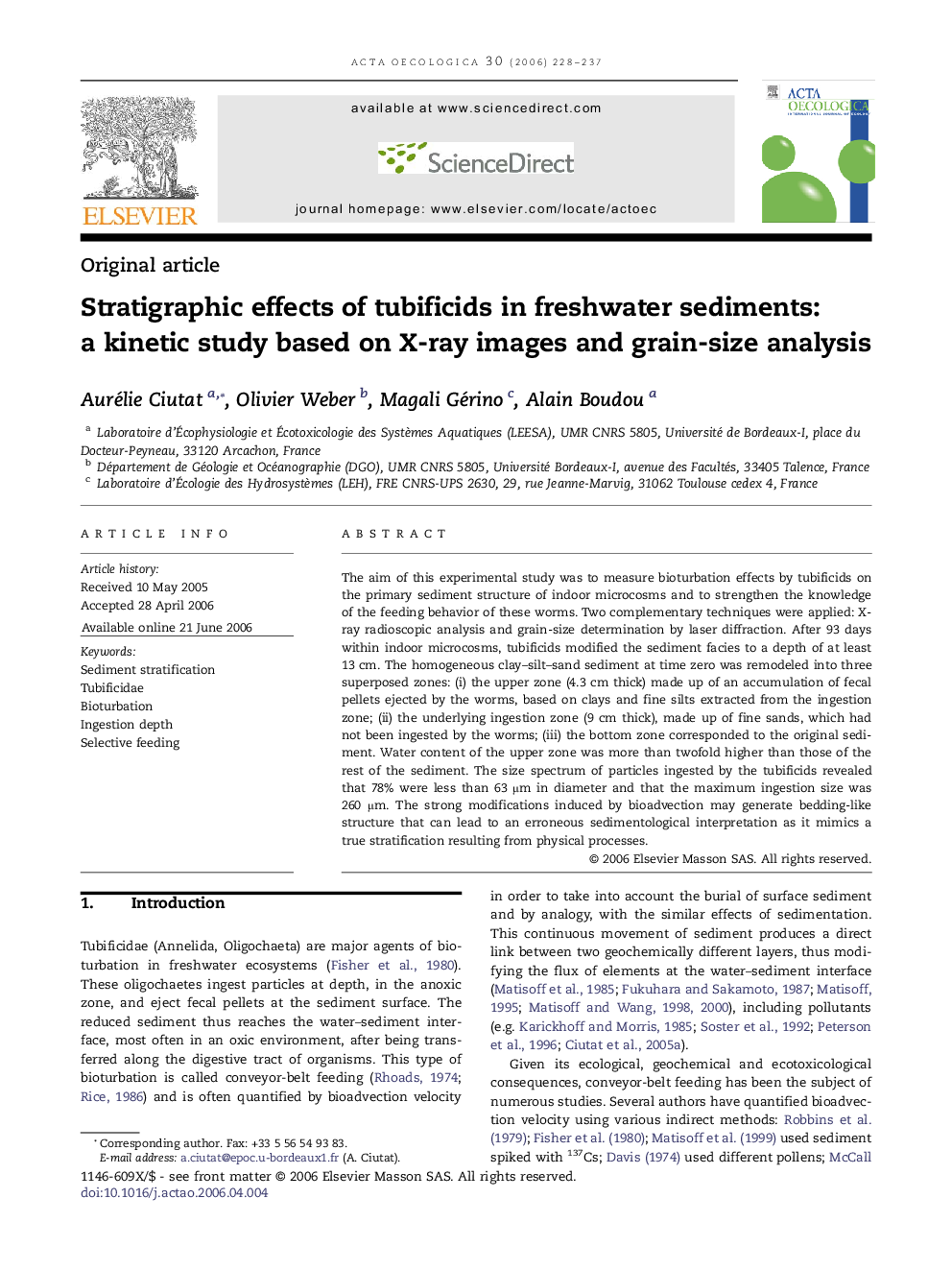| Article ID | Journal | Published Year | Pages | File Type |
|---|---|---|---|---|
| 4381641 | Acta Oecologica | 2006 | 10 Pages |
The aim of this experimental study was to measure bioturbation effects by tubificids on the primary sediment structure of indoor microcosms and to strengthen the knowledge of the feeding behavior of these worms. Two complementary techniques were applied: X-ray radioscopic analysis and grain-size determination by laser diffraction. After 93 days within indoor microcosms, tubificids modified the sediment facies to a depth of at least 13 cm. The homogeneous clay–silt–sand sediment at time zero was remodeled into three superposed zones: (i) the upper zone (4.3 cm thick) made up of an accumulation of fecal pellets ejected by the worms, based on clays and fine silts extracted from the ingestion zone; (ii) the underlying ingestion zone (9 cm thick), made up of fine sands, which had not been ingested by the worms; (iii) the bottom zone corresponded to the original sediment. Water content of the upper zone was more than twofold higher than those of the rest of the sediment. The size spectrum of particles ingested by the tubificids revealed that 78% were less than 63 μm in diameter and that the maximum ingestion size was 260 μm. The strong modifications induced by bioadvection may generate bedding-like structure that can lead to an erroneous sedimentological interpretation as it mimics a true stratification resulting from physical processes.
